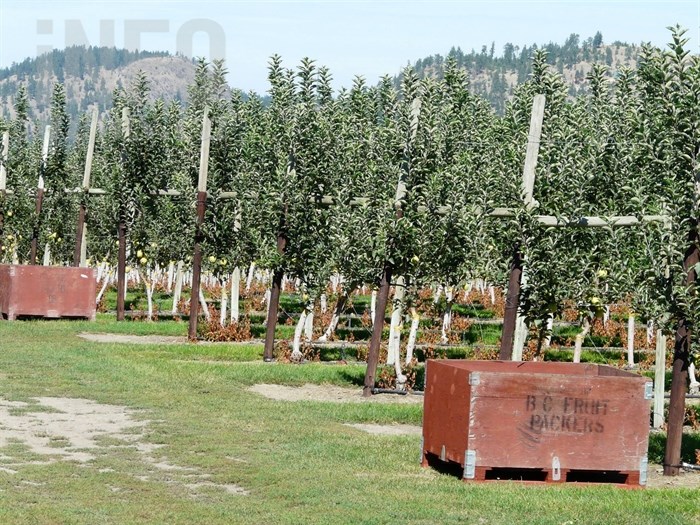
(HOWARD ALEXANDER / iNFOnews.ca)
February 12, 2021 - 6:00 AM
Over the past three decades, the number of acres in the Okanagan and Creston valleys devoted to growing apples has dropped to about one-third of what it once was.
There were more than 20,000 acres of apples grown when the program started, says a report from the Sterile Insect Release program going to Lake Country council next week. That was in 1992. Now there are 7,500 acres.
As a result, the report says, the B.C. Ministry of Agriculture, Food and Fisheries is going to create a Tree Fruit Industry Stabilization Plan. Representatives of the Sterile Insect Release program have been invited to participate.
“Finances have been impacted by the decline in apple acreage, as the total revenues from parcel tax continue to shrink,” the report states. “The sale of excess capacity from the facility has helped to stabilize the finances of the Sterile Insect Release Program.”
The program was created to rear sterile male codling moths that are released in apple orchards, preventing wild moths from breeding and damaging apples.
The cost to taxpayers and growers has not gone up since 2010 because the breeding facility in Osoyoos is now selling sterile moths to growers in Washington State.
All Okanagan residents contribute through their taxes and apple growers pay $136 per acre. The report says those fees may have to go up next year.
The program has virtually eliminated the need to spray pesticides on the apples.
The number of acres is continuing to shrink, Glen Lucas, General Manager of the B.C. Fruit Growers’ Association, told iNFOnews.ca.
Over the last two years about 10 per cent of the apple acreage has been lost. In the past year alone, there has been at least a five per cent reduction, Lucas said. That figure is based on the acres that have been replanted through a tree fruit replant program. Often apples are replaced with cherries.
What he can’t measure is the acreage that is being converted from apples to grapes because he doesn’t have access to that data. He’s also hearing that a number of growers are cutting down their apple trees and leaving the land fallow.
While the number of acres has declined, high density planting has allowed growers to produce more fruit per acre over the years.
There’s no direct conversion formula because each grower will plant their smaller, higher density trees with different spacing.
An older orchard used to produce 25 800-pound bins of apples per acre.
The goal of the high density planting is to get about double that production.
Still, even if the production per acre is doubled, the loss of more than half the land being used to grow apples means the overall crop is down from what it once was.
For more on the Sterile Insect Release program, go here.
To contact a reporter for this story, email Rob Munro or call 250-808-0143 or email the editor. You can also submit photos, videos or news tips to the newsroom and be entered to win a monthly prize draw.
We welcome your comments and opinions on our stories but play nice. We won't censor or delete comments unless they contain off-topic statements or links, unnecessary vulgarity, false facts, spam or obviously fake profiles. If you have any concerns about what you see in comments, email the editor in the link above.
News from © iNFOnews, 2021